 Established 1996
Established 1996
Suburban Electric Railway Association
Support Your Local Train
City & South London Railway - Trailer Car
When the City and South London Railway opened in 1890 between Stockwell and King William Street it was the first deep level tube railway in the world. It had been made possible by two advances in engineering. The first was the shield tunnelling method that has started with Marc Brunel's Thames tunnel built between 1825 and 1843 with the crude shield method Brunel employed been further developed by Peter Barlow for the Tower Subway of 1869. Under these methods workmen dug the tunnel deep underground protected in a circular shield of iron that was moved forward as the digging advanced. The exposed earthworks were then line with brick, in the case of the Thames tunnel and cast iron segments for the Tower Subway. Working with Barlow on the latter project was an engineer name James Henry Greathead. He refined Barlow's shield system and made it more viable. He became the consulting engineer for the City & South London project which was proposed from the outset to be built using his shield tunnelling method.
The second engineering advancement was that of electric traction. Steam trains were run in the shallower tunnels of the Metropolitan and the District railway in London but the atmosphere was still unpleasant despite gaps where steam and smoke could escape between buildings. In a deep level tube tunnel there was no possibility of ventilation on any large scale so steam propulsion was out of the question. Cable haulage has been seriously considered but problems with the supplier of the system made the company, known at this stage as the City of London & Southwark Subway, opt for electricity whereby power from the company's power station was supplied to the live conductor rail place between the track gauge and the negative return was made by the running rails. A voltage of 500 volts DC was employed and the C&SLR was the first serious public railway to operate with this form of traction following the several experimental lines around Britain and Europe in the previous decade that had proved it could be made to work. Just before the line opened the name was changed to the City & South London Railway.
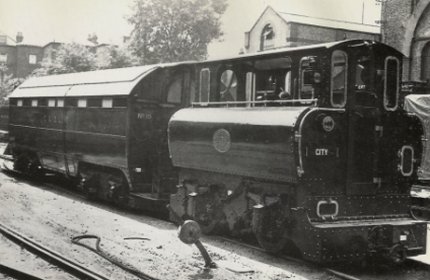
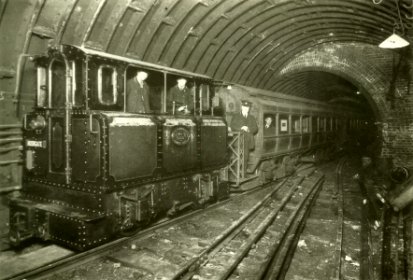
From opening the line used a fleet of four wheel electric locomotives to haul their trains. These had air reservoirs in their bodysides that were replenished at each end of the line to operate the air brakes on the carriages. The locos had a motor on each axle and a crew of two men. The carriages were wooden bodies with steel under frames and bogies and seated passenger longitudinally. The windows in the bodyside were narrow slits which earned these early carriages the nickname 'Padded Cells' at the end of each carriage was a vestibule platform with sliding X hinge gates that were opened and closed by gatemen on the train at stations. The line was a success and had many extensions during its early life, these were:
It should be noted that the last two extensions were undertaken after the C&SLR became a part of the London Electric Railways group of company's (a forerunner to today's London Underground). During the period August 1922 until December 1924 the tunnels of the C&SLR were enlarged to bring them up to the same diameter as those used on other tube lines in London and allow for more standard stock to be introduced. At first the plan was to do this work mainly at night when the line was closed but a large earthslip filled the tunnel near Elephant and Castle with spoil and the line had to be closed completely from November 1923. When it reopened it was operated by electric multiple units and the original C&SLR locomotives and carriages were disposed of.
- February 25th 1900 London Bridge to Moorgate – this meant the original northern terminus at King William Street was closed.
- June 3rd 1900 Stockwell to Clapham Common
- November 17th 1901 Moorgate to Angel
- May 12th 1907 Angel to Euston
- April 20th 1924 Euston to Camden Town
- September 13th 1926 Clapham Common to Morden

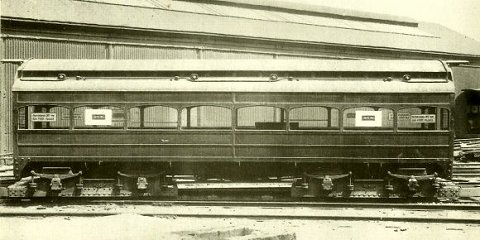
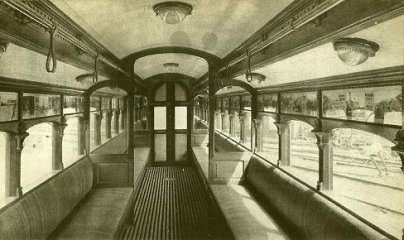
With every extension and increasing demand by passengers new locomotives and carriages had to be built. The subsequent batches of carriages after the initial 30 the line had opened with all had full size windows in the body side, but the general layout of seating and gates remained the same. They were built by a variety of manufacturers as detailed below (dates are the date of introduction to service):
- 1890 Cars 1-30 built by Ashbury Carriage & Iron Co. - original 'Padded Cell'
- 1891 Cars 31-36 built by G.F.Milnes & Co.
- 1894 Cars 37-39 built by Bristol Carriage & Wagon Works
- 1896 Cars 40-46 built by Oldbury Carriage & Wagon Co.
- 1897 Cars 47-54 built by G.F.Milnes & Co.
- 1899 Cars 55-84 built by Hurst Nelson & Co.
- 1901 Cars 85-108 built by G.F.Milnes & Co.
- 1901 Cars 109-124 built by Bristol Carriage & Wagon Works
- 1902 Cars 125-132 built by G.F.Milnes & Co.
- 1907 Cars 133-165 built by Brush Electrical Engineering Co. - All steel frames and bodies.
Our Carriage Body
Our example was acquired from the London Underground Railway Society who had rescued it and the steel body of car 163 from a summer house in Surrey. Our carriage has a steel underframe and teak body, which given its age is in very good condition. For years we believed the number of our wooden carriage was 135 but investigations have revealed this is not its identity as 135 would put it in the batch of all steel cars built by Brush and this is definitely a timber body. After studying pictures and records of C&SLR stock we believe our body is from the batch of 1902 built by G.F.Milnes & Co. numbered from 125 – 132. If so then it is the only railway carriage by that builder to survive. G.F.Milnes & Co. were a prolific builder of tramcars with works in Birkenhead which closed in 1902 and Hadley in Shropshire which opened in June 1900. We have no idea which of these two sites produced our carriage. G.F.Milnes & Co. produced three earlier batches of cars for the C&SLR in 1891, 1897 and 1901. Several of their trams are preserved and some are still in service on the Isle of Man.
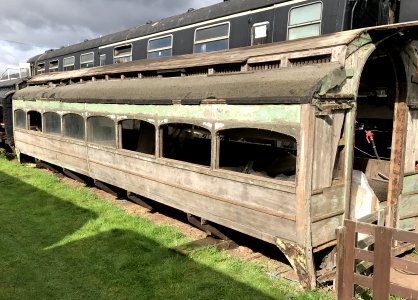
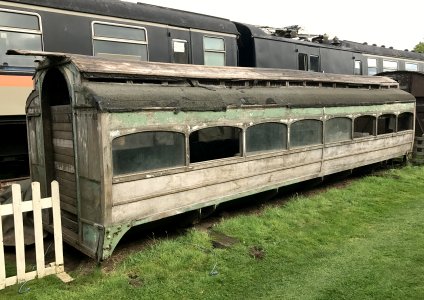
The body is a third class car and largely complete with some of the rattan seat cushions still inside. All the light fittings and decorative items from inside are long gone but the overhanging roof from the platform end where the gates were is still there. The vehicle lost its bogies when it was sold by the C&SLR in the 1920s but we acquired a pair of old London Underground wagon bogies that it could be mounted on with some modification. The vehicle was moved from Coventry to Hope Farm in Sellindge, Kent in May 2018. It has spent most of its time with us securely wrapped up to conserve it from the British weather and remains a future restoration project.


